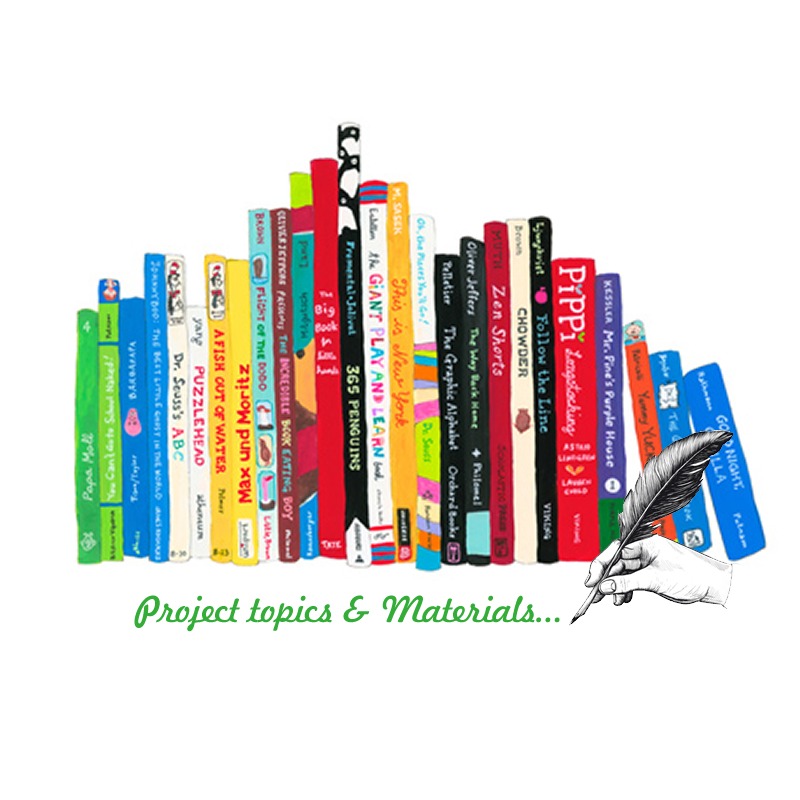-
-
$


ABSTRACT
Libraries
have been an important part of educational and information sector of any
school. The success of any library
largely depends on proper management. Several libraries have suffered failure
as a result of inadequate management and incapacitations in handling sensitive
information as regards members of the library.
This research therefore, aimed at developing a digital library system,
which will help direct and position library to meets its ever increasing
demands.In the course of the development of this new system, the current system
was analytically and critically studied or assessed and thus the identified
strengths and weaknesses were highlighted and a new system was designed for the
weakness. The present system was analyzed using a standard procedure recognized
worldwide for such purpose and this is called Structured System Analysis and
Design Methodology (SSADM). The visual
basic 6.0 programming language was used to code the program modules developed
for the system using some computer aided design tools.
CHAPTER ONE
1.0 INTRODUCTION
Digital
Library System (DLS) extends and integrate approaches adopted in traditional
libraries as well as in distributed information systems, to yield high-end
information systems, services and institutions.
Here we will explore some of the parts or components of digital
libraries and discuss several of the developments in this emerging field.
Building a comprehensive digital
library system will help users to manage all phases of the information
lifecycle. Of particular importance is
to simplify the authoring and creation process so that wider population can
participate by adding all types of multimedia content directly into digital
libraries. Downstream access allows
readers to benefit from this type of computer-mediated communication, across
time and space. Ultimately, it is
believed that knowledge will be shared and then lead to yet another cycle of
discovery, authoring and utilization that is facilitated by digital libraries.
1.1 BACKGROUND
OF THE STUDY
Times
are fast changing; we now live in a jet age which is mainly characterized by
rapid changes in technology, lifestyle and value. This is indeed an age of information
explosion.
One of the major inventions that
have driven the world to a fast pace of technological advancement is the
computer. The computer is primarily an
electronic information processor that is rapidly changing the way we acquire,
organize, recall, access, analyze, synthesize and apply information. The effectiveness with which the information
is generated and communicated determines the rate of progress of a society and
the fulfillment of its people. Modern
society is information driven and information today is a universal need.
Moreover, computers have affected
the ways which people use information.
It has changed the rate of work done, the method for accomplishing the
work alongside the relationship among the people carrying and using the
information. However, computers and
libraries are not left out in the utilization of computer to carry out their
day-to-day activities especially as it concerns the amount of information
generated. Libraries have evolved over
the years which gave rise to digital libraries.
1.2 STATEMENT
OF THE PROBLEM
There
are numerous problems with the traditional libraries. These in-adequacies are enumerated below.
1.3 GENERAL
OBJECTIVES OF THE STUDY
The
proposed system Digital Library System has it’s general objectives which it is
set out to achieve. They are as follows:
a)
To create variety of access services for
searching, browsing and discovering resources.
b)
To organize and index digital objectives for
different purpose which includes cataloging, finding aids and database.
c)
Reduction of loan and acquisition through the
use of digital library.
d)
Comprehensive storage of large repository of
data that can be accessed by authorized users.
e)
Reduce the cost of maintaining a traditional
library.
1.4 SPECIFIC
OBJECTIVE OF THE STUDY
The objectives of this proposed
system has been narrowed. This is geared
towards ensuring that the objectives are achieved. They are as follows:
1.5 SIGNIFICANCE
OF THE STUDY
In
implementing the objectives of this study, the advantages of a digital library
over the traditional library are enormous.
Users will be able to access library resource digitally without the
inconveniences of users carrying books, journals, magazines etc which could
result in rapid wear and tear of this library resource. Besides, it will afford users the opportunity
to access digital books simultaneously without waiting for the book to be
returned to the library.
The proposed system will provide
security to help track library resources through the development of a
comprehensive database that will be used to house the library resources. The system will also eliminate some of the
routine manual work prevalent in a traditional library.
1.6 SCOPE
OF THE STUDY
The
findings of this research work for the proposed system (Digital Library System)
was carried out in the Nnamdi Azikiwe University (NAU) in their digital library
section. The scope of this study will
include the following:
1.7 LIMITATION
OF THE STUDY
This
proposed system will not take into consideration audio collections. It is web based not a stand-alone delivery
system with its own user file and login ID and password. Also, time constraint during the time for
this project work is short. Financial resources is a limitation encountered in
the course of this research work.
1.8 DEFINITION
OF RELATED TERMS
Please read our license agreement for more information on the refund and product policy.
No Review Found.
Optimum Linkup
67
Total Item
Login To Comment